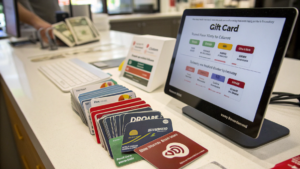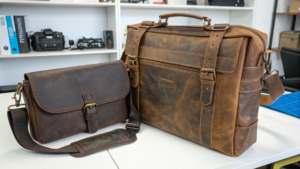What Are the Benefits of Choosing a Kraft Paper Bag?
Are you still using generic plastic bags, wondering how to make your brand stand out? Choosing a Kraft paper bag is more than an eco-friendly gesture. It is a smart move that speaks volumes about your brand's values.
Choosing a Kraft paper bag offers multiple benefits beyond sustainability, including enhanced brand image, superior durability due to long wood fibers, and a natural, authentic aesthetic. It aligns your brand with eco-conscious consumer values, making it a powerful statement about your commitment to thoughtful design and environmental responsibility.
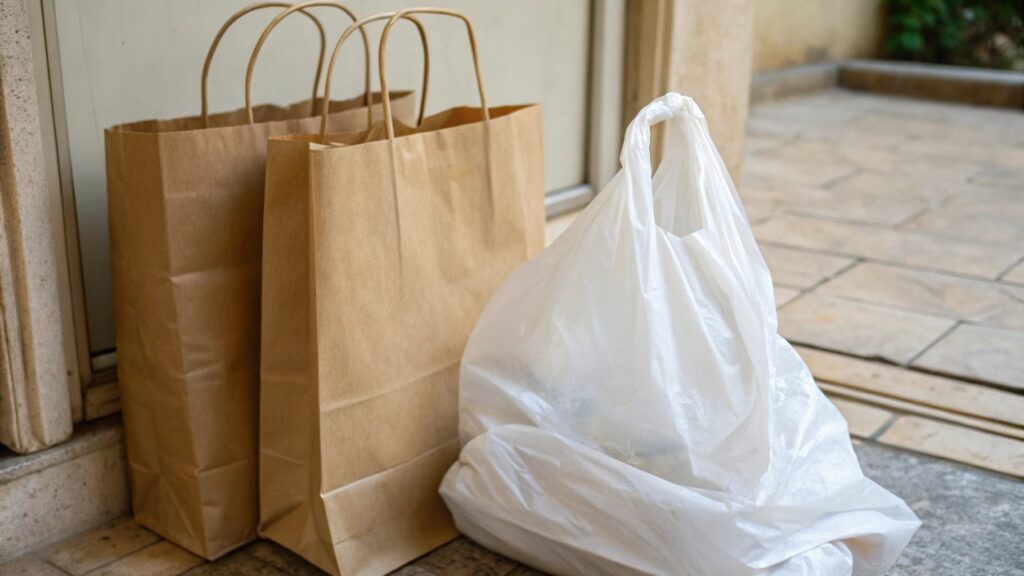
In my experience helping businesses select the right corporate gifts and packaging, I have seen a clear shift. Consumers today are looking beyond just the product. They want brands that align with their values. I want to share why I believe Kraft paper bags are not just packaging, but a powerful message that resonates deeply with modern consumers.
What Are the Advantages of Using a Paper Bag?
Are you questioning if switching to paper bags offers real advantages for your business? Many think of them simply as an alternative to plastic, but their benefits go much deeper. Using paper bags can enhance your brand image and customer experience in surprising ways.
Using a paper bag offers significant advantages, including improved environmental perception1, enhanced brand visibility through custom printing, and a tactile, premium feel that elevates the customer experience. They are recyclable, biodegradable, and convey a message of sustainability and corporate responsibility to your audience.
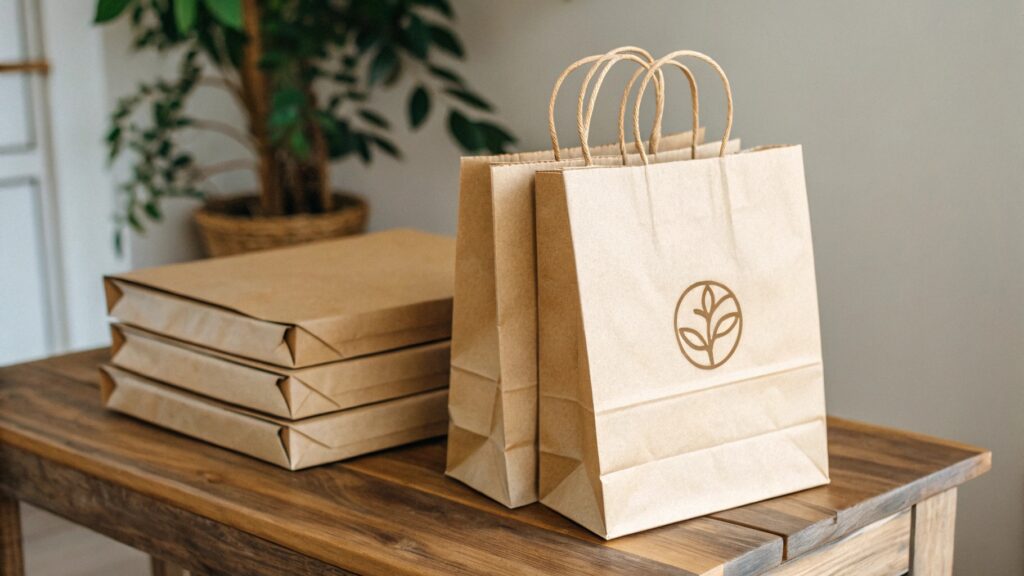
I have often advised clients to consider their packaging as an extension of their brand. A paper bag, especially a well-designed one, does more than just carry items. It carries your brand's message. My observations show that customers appreciate the effort and often associate eco-friendly choices with a more ethical and thoughtful brand.
Beyond Just Carrying: The Hidden Perks
Paper bags offer benefits that extend beyond simple utility. They are a silent salesperson for your brand.
- Environmental Impact: They are biodegradable and recyclable, reducing plastic waste and your carbon footprint.
- Brand Storytelling: Their natural look signals authenticity and a commitment to sustainability, resonating with eco-conscious consumers.
- Customization Potential: Paper bags are excellent for printing high-quality logos, designs, and brand messages, turning each bag into a mobile advertisement.
| Advantage | Benefit for Business | Impact on Consumer Perception |
|---|---|---|
| Eco-Friendliness | Reduces waste, meets regulations | Responsible, ethical, modern |
| Brand Promotion | Mobile advertising, increased visibility | Professional, memorable |
| Premium Feel | Enhances product value perception | Quality-focused, thoughtful |
| Versatility | Suitable for various products/industries | Adaptable, reliable |
| Recyclability/Biodegradability | Supports circular economy, lowers environmental footprint | Conscientious, forward-thinking |
For example, I worked with a local bakery that switched from plastic to custom-printed paper bags. The change was immediately noticeable. Customers frequently commented on how much they appreciated the eco-friendly choice, and the bakery reported an uptick in positive feedback. The bags became a talking point, subtly reinforcing the bakery's commitment to natural ingredients and sustainable practices.
Why Is Kraft Paper So Expensive?
Are you wondering why Kraft paper2 sometimes comes with a higher price tag than other options? It is a common question, especially when comparing it to cheaper, less sustainable alternatives. The cost difference is not arbitrary; it reflects the unique qualities and production process of Kraft paper.
Kraft paper can be more expensive due to its specialized manufacturing process, which uses longer wood fibers and less bleaching to achieve superior strength and durability. This results in a higher-quality, more tear-resistant product that is also more environmentally friendly, justifying its premium cost compared to standard, less durable papers.
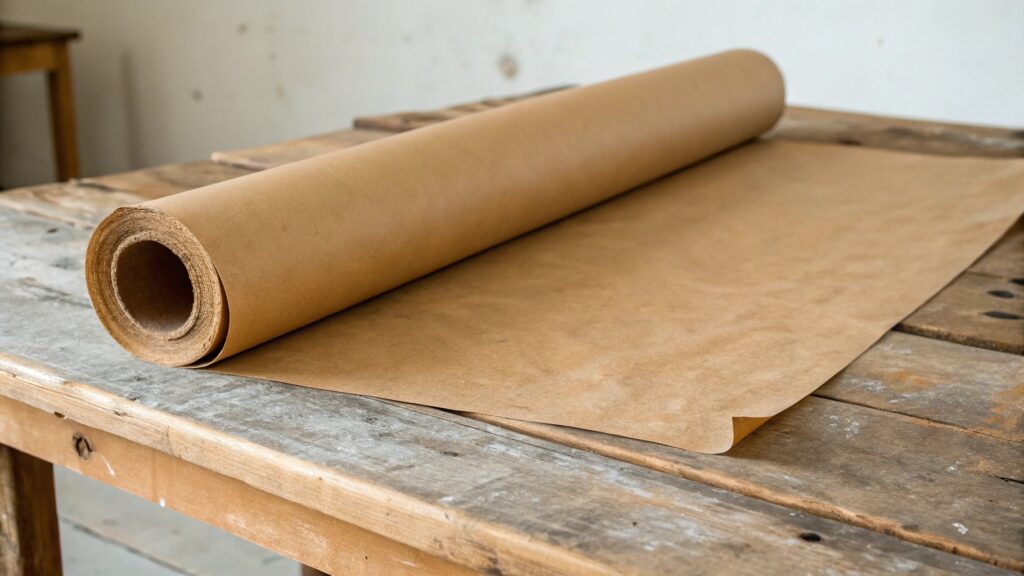
I have often had discussions with clients about the perceived cost of sustainable materials. While Kraft paper might seem more expensive upfront, I always explain that it is an investment in quality and brand image. My experience has shown that its durability and the positive message it sends often outweigh the initial cost difference, leading to long-term value for the brand.
Understanding Kraft Paper's Value
The price of Kraft paper is a reflection of its unique characteristics and production.
- Strength and Durability: Kraft paper is made from virgin wood pulp using a specific process that retains longer cellulose fibers. This makes it significantly stronger and more resistant to tearing than regular paper.
- Minimal Processing: Less bleaching is involved, which reduces chemical usage and energy consumption during production. This process also contributes to its natural, earthy look.
- Sustainable Sourcing: Many Kraft paper products come from sustainably managed forests, which adds to the production costs but ensures ethical sourcing.
| Feature | Impact on Cost | Benefit to User/Brand |
|---|---|---|
| Long Fibers | Higher raw material quality | Superior strength, tear-resistance |
| Less Bleaching | Reduced chemical use, energy | Eco-friendly, natural aesthetic |
| Virgin Pulp | Consistent quality, stronger | Reliable performance, premium feel |
| Sustainability | Ethical sourcing, certifications | Positive brand image, consumer trust |
For example, a boutique clothing store I worked with initially balked at the cost of Kraft paper bags. However, after trying them, they noticed a significant reduction in bag breakages, especially with heavier items like denim. More importantly, customers frequently complimented the bags' quality and eco-friendly appeal, reinforcing the brand's commitment to sustainable fashion. The initial investment paid off in durability and customer satisfaction.
What Is the Difference Between Kraft Paper and Normal Paper?
Are you wondering if there is a real difference between Kraft paper and just "normal" paper, or if it is just clever marketing? While both are paper, their production methods and resulting properties make them distinctly different, especially for packaging purposes.
The main difference between Kraft paper and normal paper lies in their manufacturing process and resulting strength. Kraft paper is made using a chemical pulping process that retains longer cellulose fibers, making it significantly stronger, more durable, and tear-resistant than regular paper, which typically uses shorter, more processed fibers.
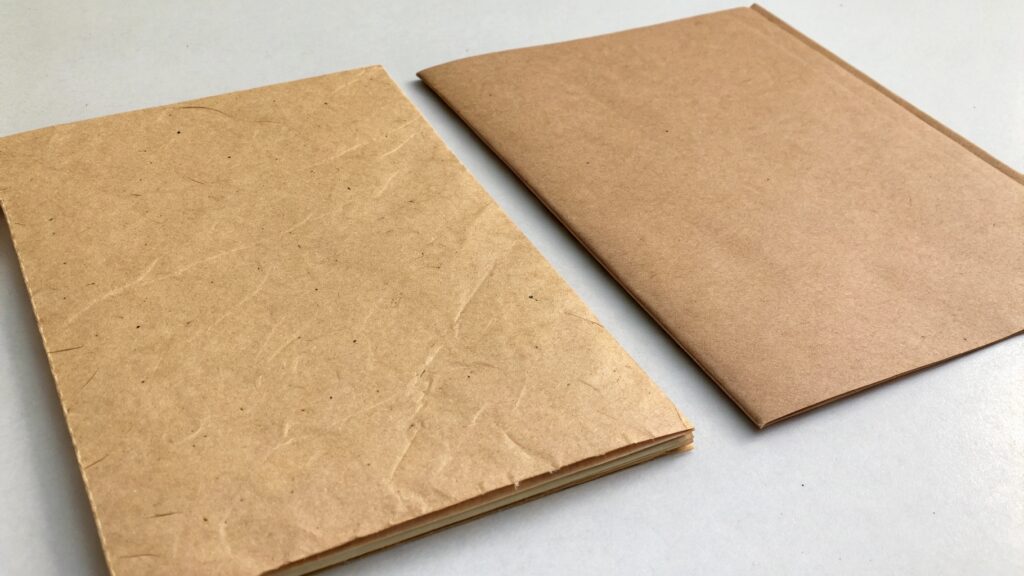
I have seen many people mistake all paper bags as being the same. However, I often explain that the subtle differences are actually quite significant, especially when it comes to packaging. Understanding these distinctions helps you choose the right material that not only looks good but also performs effectively for your brand's needs.
Key Distinctions in Paper Types
The differences between Kraft paper and regular paper come down to how they are made and what they are made from.
- Fiber Length: Kraft paper uses longer wood fibers, which are preserved during its less aggressive pulping process. Regular paper often uses shorter, more refined fibers.
- Bleaching: Kraft paper is typically unbleached or minimally bleached, giving it its characteristic brown color. Regular paper is often heavily bleached to achieve a bright white appearance.
- Strength: Due to its longer fibers and less lignin removal, Kraft paper is much stronger and more durable than conventional paper.
- Recyclability: While both are recyclable, Kraft paper's strength often allows it to be recycled multiple times without significant degradation.
| Feature | Kraft Paper | Normal Paper (e.g., printing paper) |
|---|---|---|
| Fiber Length | Long, strong cellulose fibers | Shorter, more processed fibers |
| Pulping Process | Kraft process (sulfate), less lignin removed | Sulfite or mechanical pulping, more lignin removed |
| Bleaching | Unbleached or minimally bleached | Heavily bleached to achieve whiteness |
| Strength | High tear and burst strength | Lower strength, more prone to tearing |
| Appearance | Natural brown, earthy tone | White, smooth, often brighter |
| Applications | Packaging, bags, industrial uses | Writing, printing, general office use |
For instance, when a gourmet food shop needed bags for heavy artisanal cheeses and bottles, I recommended Kraft paper bags. A regular paper bag would have likely torn, leading to damaged products and a poor customer experience. The Kraft bags, however, held up perfectly, conveying quality and care—a testament to their superior strength over standard paper.
Conclusion
Choosing Kraft paper bags offers significant benefits for your brand. They are not just an eco-friendly choice but a statement of authenticity, durability, and value. Their strength and natural appeal enhance customer experience and align your brand with modern consumer values.


